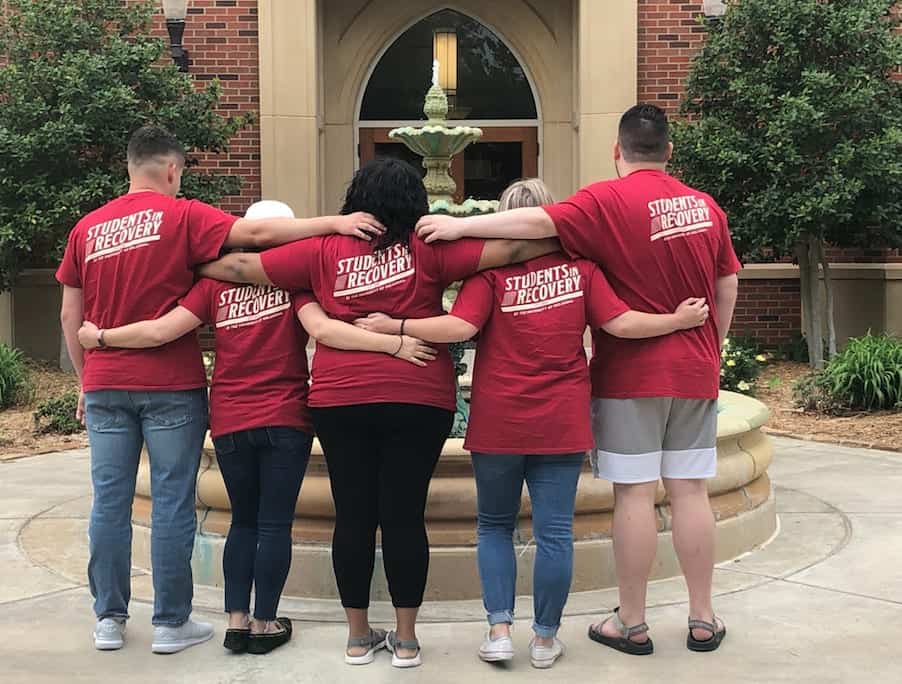Every college and university has a unique culture, with differing strengths and varying needs. Just as there is no single, perfect path to recovery, there is no one, linear approach to supporting students in recovery and their allies. One way to establish a recovery-supportive campus community is through building a collegiate recovery program (CRP). CRPs are institutionally supported initiatives dedicated to helping students obtain their education while having the resources, community, and support they need to maintain their recovery in college.
Through our work with staff and students at hundreds of institutions across the United States, the SAFE Campuses team has gained first-hand insight into the student resource landscape and the unique challenges and diverse capacities of each campus. After examining the processes and practices from existing and emerging programs and hearing the challenges and successes of collegiate recovery professionals, SAFE Project recommends the following components to build a strong CRP:
Dedicated Leader
- Have at least one paid, qualified, trained, and dedicated professional employed by the College or University who supports students in recovery.
Dedicated Space
- Identify dedicated physical space on campus for students in recovery to meet, seek fellowship, and receive support.
Peer Support
- It is often said that you can’t have a collegiate recovery program without a collegiate recovery community. It is essential for CRPs to have a network of students to provide peer support to one another. Peer support provides a sense of belonging, community, fun, accountability, and leadership opportunities while pursuing their education.
- It is prudent that a peer support community is cultivated with a culture of recovery, structure, inclusion, and support.
- Peer support can take many forms, from a free-flowing community to a structured group of paid and trained paraprofessionals.

Recovery Housing
- If applicable to the campus structure, campuses can offer dedicated recovery housing on campus or provide access to recovery-oriented housing options off-campus. Recovery housing is very different from “substance free” housing. “Substance free” housing is for students who are sober for personal or religious reasons or simply prefer to be drug, smoke, and alcohol free. Recovery housing is reserved for students who identify as being in recovery, and it may provide supportive resources such as counseling services, academic assistance, and meetings.
Programmatic Elements
- Programmatic elements must account for a full range of recovery stages and pathways.
- e.g., 12-Step; Medication Assisted Recovery; Faith Based approaches; Secular Recovery approaches.
- Stages range from:
- Early recovery (requiring greater levels of structure and support).
- Sustained recovery (allowing greater autonomy, but still able to benefit from CRP resources and supports).
- Peer allies, or community members with a supportive relationship with people in recovery in their lives.
- Recognize the prevalence of co-occurring disorders and encourage CRPs to develop appropriate programming and referrals for students practicing various pathways.
- Maintain clearly understood requirements for continued student participation (e.g., regular participation, abstinence, support for fellow students, and drug testing if/when appropriate).
- It is essential to include a pre-planned response for recurrence of use, including referral to treatment and other support services as needed.
Connecting with Students
- Advertise the CRP across the campus (e.g., signage, student orientation, campus tours, web presence, and social media).
- Publicize the program to incoming students and parents (e.g., emails to incoming first-year students, inclusion in orientation/convocation for general student population and/or for incoming CRP students and their families).
- Share your program with community providers and professionals in the recovery field so they can make college-seeking clients aware of your support services.
- Provide talking points for your admissions team so that they can accurately discuss your university services with prospective students in recovery.
- Assist non-participating students who reach out for support by facilitating referrals and offering support in the transition into recovery and where necessary, back into school.
- Serve as liaison by providing referral services to other campus resources (e.g., career services, counseling services, disability services, academic support services, case management).
- Serve as liaison by providing referral services to off campus resources (e.g., individual therapy, medication assisted recovery, family therapy, recovery community organizations).
Recovery Support Collaborations
Collaboration with other offices and resources on campus is critical. No one in recovery, especially our students, benefits from seeking to go it alone. Opportunities for partnerships that benefit student success include:
- Seminars related to recovery or relapse prevention.
- Skills training (e.g., coping skills, time management, financial management).
- Holistic social identity awareness and development.
- Easily accessible mutual aid meetings (on or off campus).
- Case management for recovery support and academic re-entry.
- Academic support (i.e., formal or informal advising).
- Team building activities, including substance free social events.
- Admission support to navigate the admissions process and entry into the school.
- Post-Graduation and alumni resources (either formalized or through peer networks) to support students as they navigate the transition from college into the professional world. Check out our app: Reconnected!
Additional Campus Partners and Stakeholders
- Stakeholders assist with financial development, referral sources, additional programmatic and student support services, outreach, student engagement, and education opportunities.
- Partner with campus entities that support overdose prevention efforts and recovery (e.g. student health infrastructures, student conduct offices, naloxone distribution centers, and training with first responders and residential life).
- Outreach to the larger student body to create awareness of substance use and addiction in order to educate, foster a caring community, and promote recovery.
- Work to reduce stigma on campus through education, recovery ally trainings, and workshops that promote person-first language.
SAFE Project is here to help!
As you build a CRP and continue to enhance and grow the program, it’s important to keep each of the aforementioned components in mind. Regular check-ins with your staff and those investing in the program will be key for continued success.
The SAFE Campuses team provides assistance and guidance for anyone looking to build a collegiate recovery program or improve an existing one.
